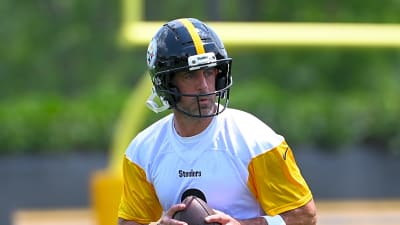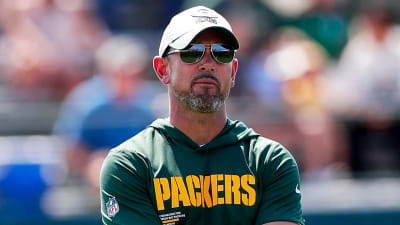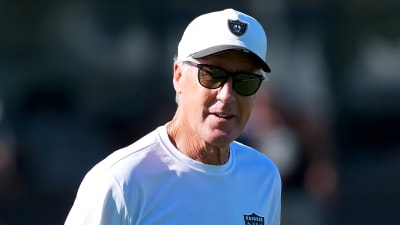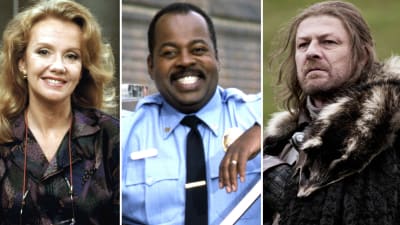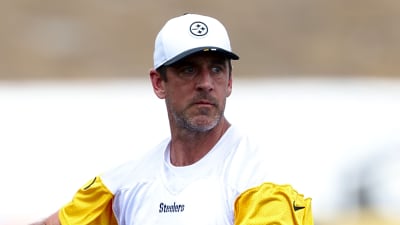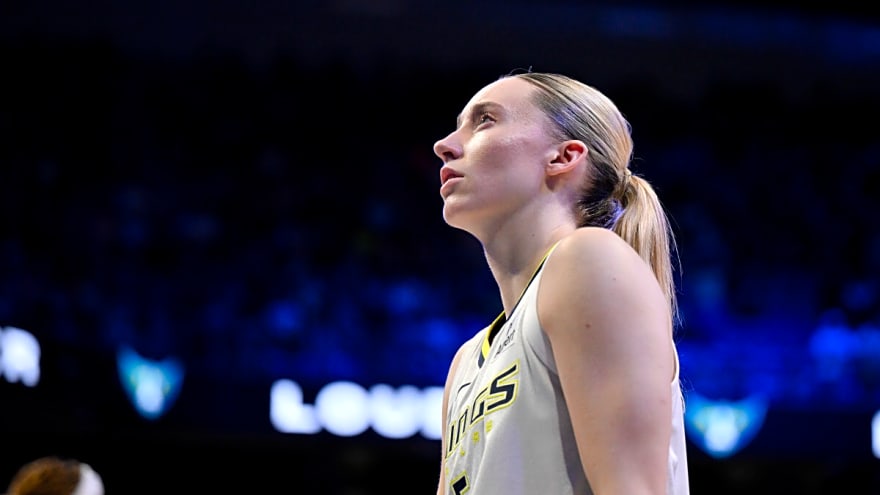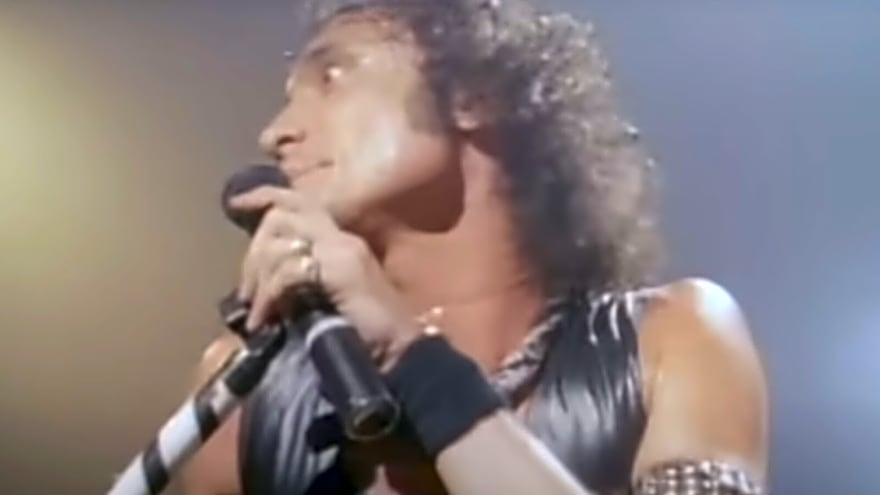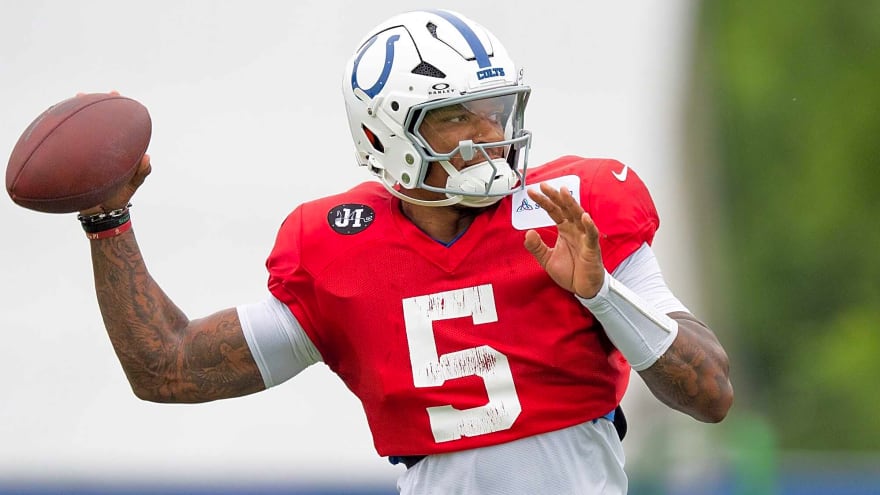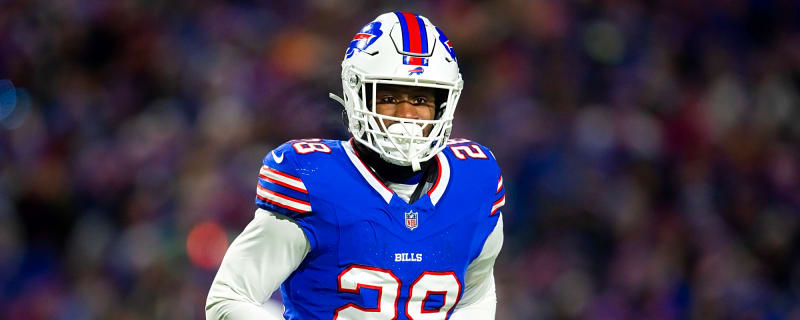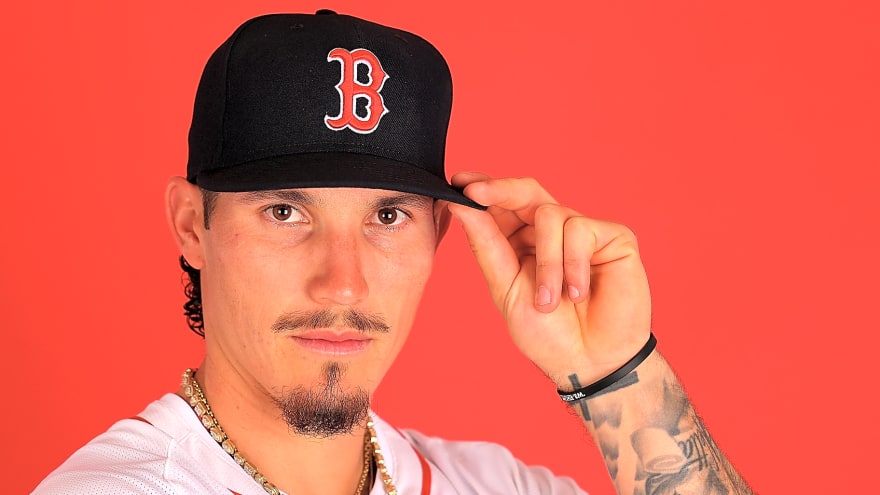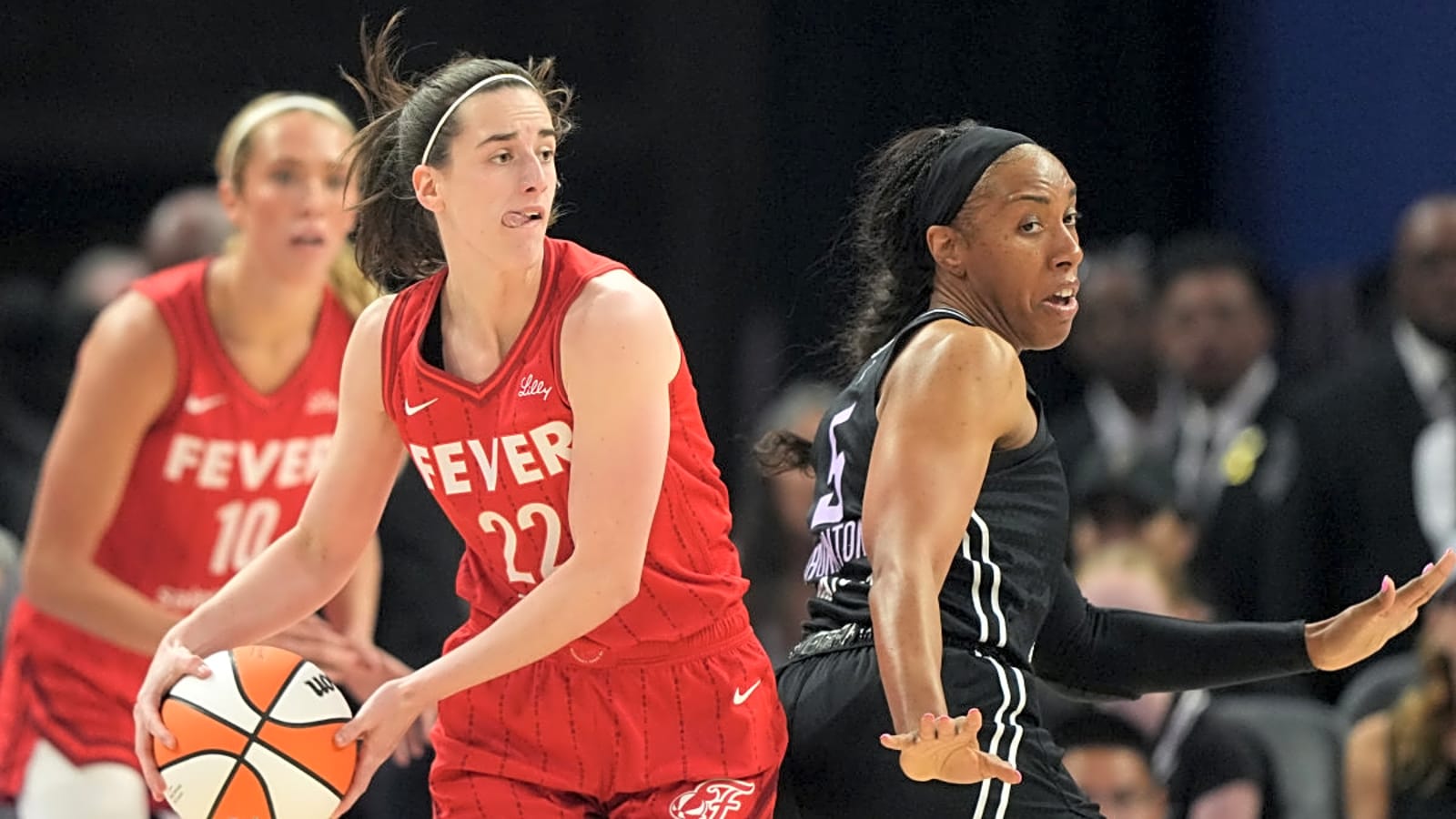
Heading into San Francisco, where the Indiana Fever play the surprisingly competitive expansion Valkyries on Thursday night, the issue lingering over the Fever--and much of the conversation around the WNBA--was the physical nature of Tuesday's game, a big win over the Sun that saw multiple run-ins with players from both sides.
One play that was especially noteworthy came in the third quarter when Jacy Sheldon of Connecticut poked Caitlin Clark in the eye whie defending her, a play that looked more than a little intentional. Clark and Sheldon got into a light pushing match, when Marina Mabrey stepped in and knocked Clark to the floor.
Originally, Mabrey was just assessed a technical foul on the play, as were Clark and the Sun's Tina Charles. But on Wednesday, the league announced that Mabrey's foul was upgraded to a flagrant-2.
The game sparked debate throughout the sports-chatter world, about how WNBA opponents are manhandling Clark, and about how officials continually let play get out of hand. Clark, for one, was not about to get into it.
Asked on Thursday for her reaction to Mabrey's upgraded foul, Clark clearly dodged the question.
"I think Steph (White) talked about it plenty after the last game. And it is what it is, you move on. My focus is just on tonight," she said.
Clark was asked about the effects of dealing with physical play from opponents, something that a Bay Area star--Stephen Curry--has gone through in his entire NBA career. Clark said she tries to handle rough-and-tumble defense in the same way as Curry: Get stronger and deal with it.
"I think Steph is somebody I have watched, I have watched a lot of film, I try to watch as many Warriors games as I can, just because I love the way that he plays and there is so much I can learn from him," Clark said. "But I think when you look at Steph and I think something that I remember from the first time I watched him in person is how strong he is physically. Like, he is built. He really is. I think that showed me going into Year 2, how much time I needed to put into the weight room to be able to play at this level of physicality.
"And also, to not get tired in the course of the game. The coaching staff has done a good job of putting me in positions that maybe I am off the ball a little bit more, too. You see that with Steph a lot, too. I think he just embraces it, and I think that is the only thing you can do. Continue to embrace it and step up to the challenge with it."
More must-reads:
- Paige Bueckers' scoring prowess already rivaling Caitlin Clark with latest feat
- Sophie Cunningham has profane rant about disrespect of Caitlin Clark
- The '2024-25 NFL TD catch leaders' quiz
Breaking News
Trending News
TODAY'S BEST
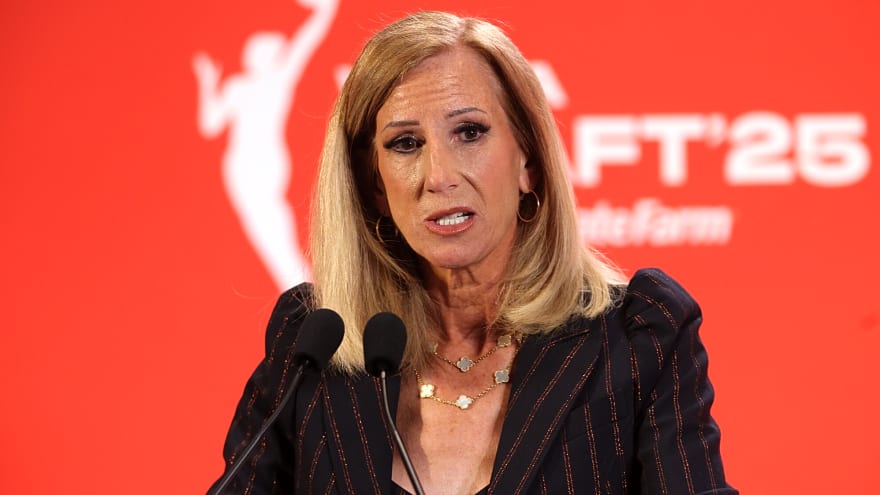
Is WNBA facing a competitive balance problem?
The WNBA is riding a wave of momentum. With plans to grow from 13 to 18 teams by 2030 and surging interest through media deals, merchandise sales and fan engagement, the league’s future looks promising. WNBA Commissioner Cathy Engelbert called the expansion a “powerful reflection” of the league’s growth, talent depth and rising demand for women’s basketball. But beneath the celebration, a question remains that no one seems to be asking: Is the WNBA facing a competitive balance problem? Competitive balance — the idea that teams are relatively even and games are close — is critical to any league’s success. It fuels fan excitement, unpredictability and sustained interest. For the WNBA, where every game plays a role in shaping perceptions of growth and legitimacy, balance is vital. But recent post-All-Star break performances suggest an emerging issue. Since the All-Star Game on July 19, only three of the league’s 24 games have been decided by five points or fewer. That’s less than 13 percent. Even more striking is the average margin of victory: 16 points. In basketball terms, that’s a blowout — night after night. The post-break stretch is usually a time for thrilling games and tight playoff races. Instead, we’ve seen lopsided contests and few nail-biters. This raises real concerns about whether the WNBA’s on-court product is keeping pace with its branding and growth goals. Rapid expansion reflects optimism and ambition, but it also risks spreading talent too thin. While the WNBA has a solid foundation of elite players, increasing the number of teams demands a deeper bench of high-level talent. Without it, we risk more games lacking competitiveness, which could impact viewership, ticket sales and long-term fan engagement. To stay on course, the WNBA needs more than expansion announcements and branding victories. It must invest deeply in talent development — scouting, youth pipelines, international recruitment and training programs — to ensure new teams are not just filling rosters but fielding contenders. Expansion must be matched by an equal focus on building a talent base that can keep the product exciting. Marketing has done wonders for the WNBA. But if the actual games don’t match the hype, that momentum risks stalling. The league must keep a close eye on competitiveness because competitive balance isn’t just a game-day issue. It’s a cornerstone of lasting success.

Notre Dame quarterback race takes surprising turn
The Fighting Irish opened up training camp at the LeBar Football Practice Fields in Indiana on Thursday, marking the first day of Notre Dame's quarterback competition between Kenny Minchey and CJ Carr. The team is searching for former QB Riley Leonard's replacement before they travel to play Miami on Aug. 30. Per The Athletic's Pete Sampson, Minchey earned first-team reps while Carr threw three interceptions during the first practice of the summer. Minchey getting the majority of first-team reps might come as a surprise to many fans who thought Carr was expected to run away with the starting job. Earlier this month, ESPN's Mark Schlabach named Carr the Irish's "X factor" heading into the season. Given his three interceptions in practice on Thursday, the freshman has much to prove before he can take away the starting gig from Minchey. Minchey didn't blow anyone away with his play on Thursday either. However, the sophomore might have done enough to continue with the first-team offense until Carr stops creating turnovers. Minchey might be head coach Marcus Freeman's desired starter for the upcoming season. In May, Freeman told Sampson that the coaching staff was looking to design the third-down offense around Minchey before training camp. “I wanted to be like, ‘I like your book and all those things, and thanks for the compliments, but the reason we went for it on fourth down was because of the confidence we had in getting that first down.’” Freeman said via The Athletic. “And so, I sat with the offense and said, 'OK, Kenny Minchey isn’t the running quarterback that Riley Leonard was — how do we create that confidence in the head coach that we can sequence things on third down, knowing that we’re going to go for it on fourth down?'” For now, the job is Minchey's to lose.

Yankees Make Luis Gil Announcement Ahead of Trade Deadline
Regardless of whatever final moves the New York Yankees make before the trade deadline, at least we know the starting rotation is guaranteed to look different in August. Yankees manager Aaron Boone confirmed on Thursday that reigning AL Rookie of the Year Luis Gil will make his long-awaited season debut against the Miami Marlins on Sunday. Gil, who turned 27 in June, suffered a high-grade lat strain in spring training. It is unclear if Gil will work on a strict pitch count against the Marlins. He struck out seven and allowed a solo home run in his final rehab start at Triple-A Scranton/Wilkes-Barre on Tuesday night. Gil went 15-7 with a 3.50 ERA in 151 2/3 innings last season, becoming the first Yankee since Aaron Judge (2017) to win AL Rookie of the Year. He would have likely opened as the Yankees’ No. 3 or No. 4 pitcher had he not gone down in spring training. Boone said that Cam Schlittler is expected to start on Saturday. Schlittler, a 24-year-old who debuted earlier this month, owns a 15-9 K-BB ratio and a 4.91 ERA in his first 14 2/3 innings. Although Boone acknowledged that Schlittler could move to the bullpen, he added that those conversations haven’t happened yet. “We’ll see where the dust settles today with everything,” Boone told reporters. The Yankees entered Thursday at 59-49 and trail the Toronto Blue Jays by four games in the AL East. However, the Yankees hold a one-game lead over the rival Boston Red Sox for the AL’s top Wild Card spot.

Former Angels Outfielder Calls Out Halos as Trade Deadline Nears
The Los Angeles Angels have just a few more hours until the trade deadline, and a former player recently called out his former squad for not selling. The Halos are four games back from the final Wild Card spot and recently brought in a pair of veteran relievers, but retired centerfielder Cameron Maybin thinks that the Angels should be parting ways with more pieces to build towards the future. "What are the Angels waiting for," asked Maybin on his Twitter/X account. "...start selling already!" Maybin went a step further, later asserting that closer Kenley Jansen was signed purely for trade deadline movement. "Dodgers might as well go get Kenley Jansen back at this point," Maybin wrote on X. "Pretty sure he signed with the Angels just to make the trade deadline commute smoother. "Just feels right to me!" If the Angels believe that they can make a run, holding onto a revered closer such as Jansen is certainly what the correct course of action is. After the Halos acquired Luis Garcia and Andrew Chafin from the Washington Nationals, for Jake Eder and minor leaguer Sam Brown on Wednesday, it looks like it could be the start of building a contender for this season. Another piece that the Halos would get a ton of value from is adding another starting pitcher. Perhaps flipping an expiring contract for a rotational piece so as not to give up a prospect keeps the Angels in contention for 2025, but doesn't mess with the future of the franchise. Regardless of what happens next, the Angels are still a piece or two away from being seen as a team that can make an impact in October. If the Halos do, in fact, start selling as Maybin urged, the deals must start coming in before 3:00 p.m PT.
Customize Your Newsletter
 +
+
Get the latest news and rumors, customized to your favorite sports and teams. Emailed daily. Always free!
